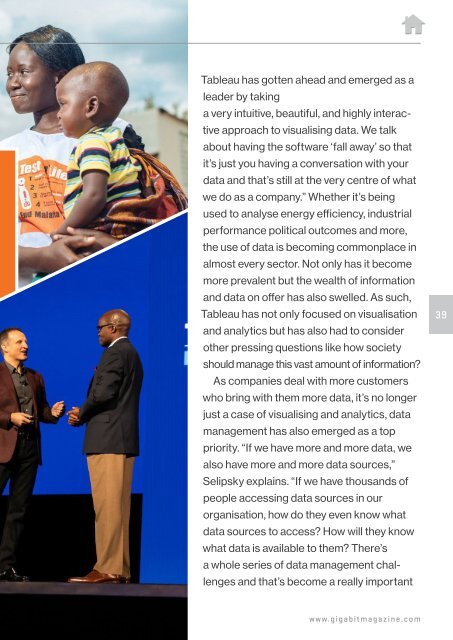Gigabit January 2019
You also want an ePaper? Increase the reach of your titles
YUMPU automatically turns print PDFs into web optimized ePapers that Google loves.
Tableau has gotten ahead and emerged as a<br />
leader by taking<br />
a very intuitive, beautiful, and highly interactive<br />
approach to visualising data. We talk<br />
about having the software ‘fall away’ so that<br />
it’s just you having a conversation with your<br />
data and that’s still at the very centre of what<br />
we do as a company.” Whether it’s being<br />
used to analyse energy efficiency, industrial<br />
performance political outcomes and more,<br />
the use of data is becoming commonplace in<br />
almost every sector. Not only has it become<br />
more prevalent but the wealth of information<br />
and data on offer has also swelled. As such,<br />
Tableau has not only focused on visualisation<br />
and analytics but has also had to consider<br />
other pressing questions like how society<br />
should manage this vast amount of information?<br />
As companies deal with more customers<br />
who bring with them more data, it’s no longer<br />
just a case of visualising and analytics, data<br />
management has also emerged as a top<br />
priority. “If we have more and more data, we<br />
also have more and more data sources,”<br />
Selipsky explains. “If we have thousands of<br />
people accessing data sources in our<br />
organisation, how do they even know what<br />
data sources to access? How will they know<br />
what data is available to them? There’s<br />
a whole series of data management challenges<br />
and that’s become a really important<br />
39<br />
www.gigabitmagazine.com

















